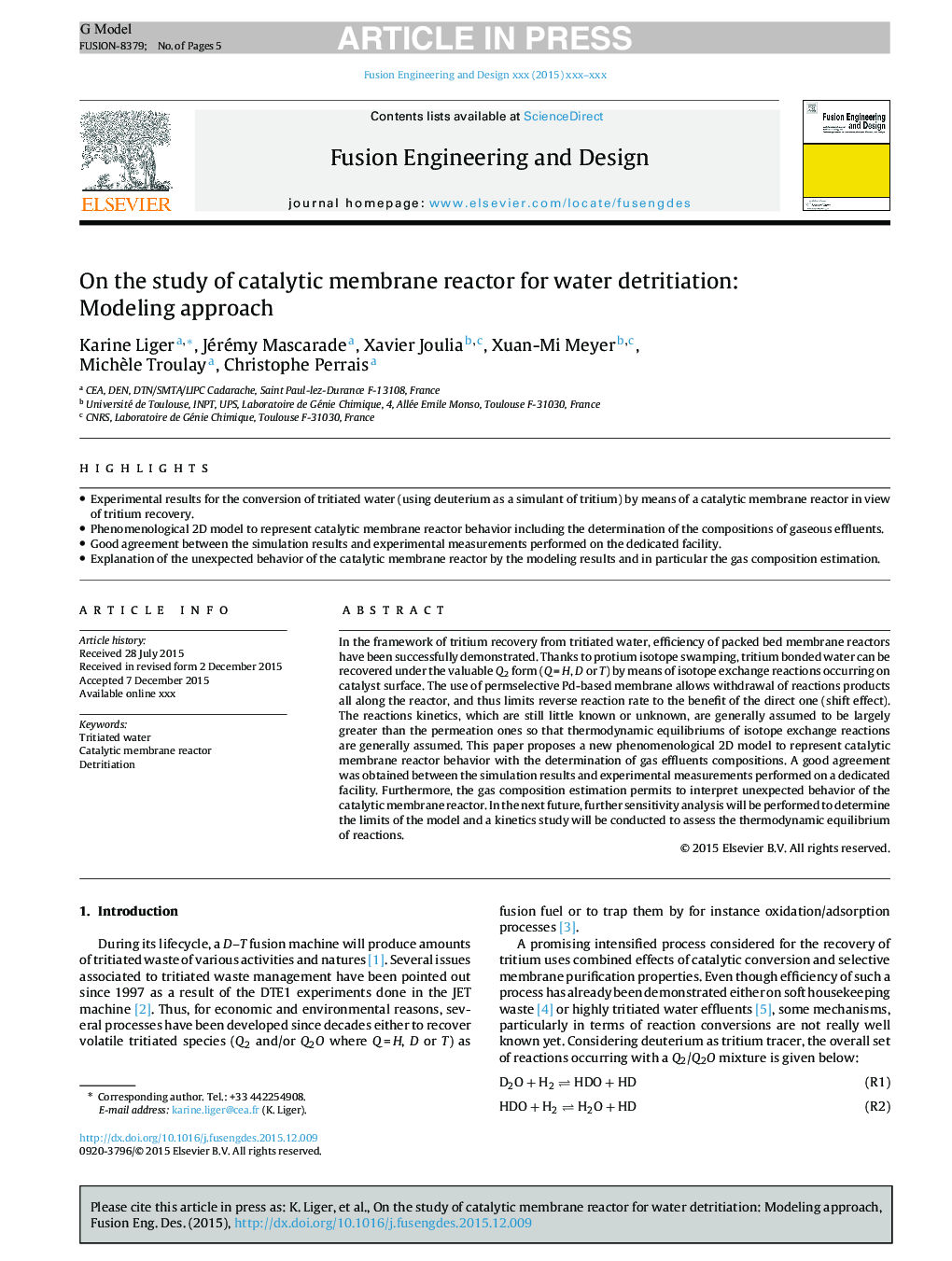| Article ID | Journal | Published Year | Pages | File Type |
|---|---|---|---|---|
| 4921358 | Fusion Engineering and Design | 2016 | 5 Pages |
Abstract
In the framework of tritium recovery from tritiated water, efficiency of packed bed membrane reactors have been successfully demonstrated. Thanks to protium isotope swamping, tritium bonded water can be recovered under the valuable Q2 form (QÂ =Â H, D or T) by means of isotope exchange reactions occurring on catalyst surface. The use of permselective Pd-based membrane allows withdrawal of reactions products all along the reactor, and thus limits reverse reaction rate to the benefit of the direct one (shift effect). The reactions kinetics, which are still little known or unknown, are generally assumed to be largely greater than the permeation ones so that thermodynamic equilibriums of isotope exchange reactions are generally assumed. This paper proposes a new phenomenological 2D model to represent catalytic membrane reactor behavior with the determination of gas effluents compositions. A good agreement was obtained between the simulation results and experimental measurements performed on a dedicated facility. Furthermore, the gas composition estimation permits to interpret unexpected behavior of the catalytic membrane reactor. In the next future, further sensitivity analysis will be performed to determine the limits of the model and a kinetics study will be conducted to assess the thermodynamic equilibrium of reactions.
Related Topics
Physical Sciences and Engineering
Energy
Energy Engineering and Power Technology
Authors
Karine Liger, Jérémy Mascarade, Xavier Joulia, Xuan-Mi Meyer, Michèle Troulay, Christophe Perrais,
